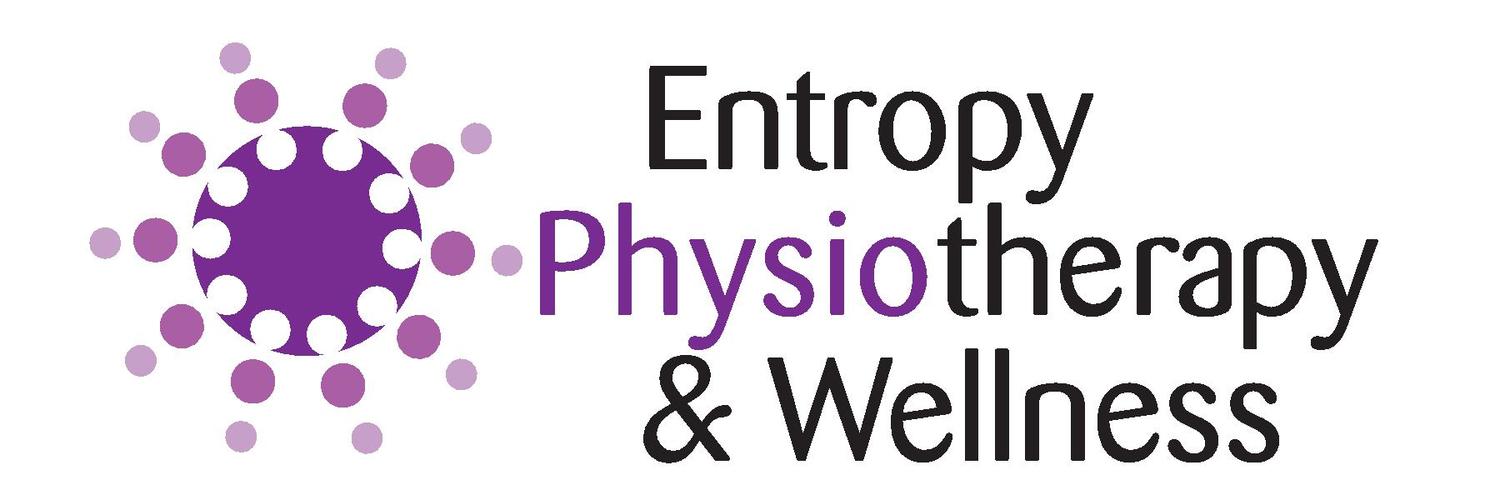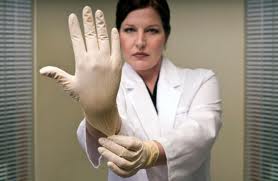We the People of Physical Therapy (Part 2)
/At the basis of providing competent care to all people, we must create inclusive means of communication within the clinical setting. All forms of our communication with patients should be respectful to all people seeking care so that everyone, including those within the LGBTQ+ population, receive equal quality of care. The following is a short, although surely incomplete, list of recommendations cited in literature to improve the inclusivity of communication constructs already in place in the clinical setting.
1. Use informed, inclusive, compassionate language:
It is important to note that “medical literature on culturally sensitive care” for marginalized groups in society “recognizes language and communication as fundamental to engendering trust with patients, positively influencing patient satisfaction and adherence, and ultimately improving engagement in care and health outcomes” (Goldhammer, 2018). With the shifting patterns of reimbursement and emphasis on patient outcomes, it makes sense that a move toward more inclusive terminology is beneficial for both all patients and clinicians. Hetero/cis-normative terminology and assumptions are seen as microaggressions, abolishing patient trust and contributing to decreased quality and continuity of care (Cahill, 2017).
Language is important on medical intake forms, educational material, and exercise program prescriptions. Literature suggests that forms should offer qualifiers educating patients on why certain information is being collected (ex. legal name for insurance vs. preferred name), and offer ability to write-in or omit answers in order to limit heteronormative assumptions about the patient population (Wahlert, 2014 & Deutsch, 2014, Nadal, 2016). Medical documents can be made more inclusive by addressing legal name for insurance, preferred name, gender identity, gender expression, pronouns. And educational materials should be available in gender neutral terms, or available for various demographics of people, to avoid appealing solely to a heteronormative patient population (Goldhammer, 2018).
Inclusive language in interpersonal conversations is also important. Reflection upon and correcting personal biases and heteronormative assumptions can improve patient interactions, prevent the clinician from asking insensitive or medically unnecessary questions/comments, and help prevent barriers to care that result from a clinician’s inappropriate or insensitive language (Colpittis, 2016). Adopting an attitude of respect versus tolerance for patients who are LGBTQ+ is also necessary and contributes to quality care, because clinicians who respect this population are more likely to provide equally competent care and advocate for their patients’ needs (Burch, 2008).
2. Provide simple apologies, and then seek your own answers:
Genuinely apologize to patients when terminology or culturally competent education is lacking, without offering excuses for mistakes. As one patient reported, “’Healing requires love’” and competent health providers “’push themselves to learn…so as to not compound the errors and terrors already endured [by the patient]. They apologize when they get it wrong. They work to make it right. They listen.’” (Cahill, 2017). It is understandable that terminology mistakes can happen in communication and/or cultural practices could be unknown to clinicians. Using Cognitive Behavioral Therapy concepts, the lapses in knowledge can be remedied by offering a simple apology, explaining your desire to improve cultural sensitivity, and taking steps to improve your own knowledge without tasking the patient to teach you (Goldhammer, 2018). Seeking and collecting resources for yourself and your patients is expected with quality care, so proactive and reactive efforts to attain such sources of information (ex. World Professional Association for Transgender Health, Human Right Campaign, etc.) is key to developing positive clinician-patient relationships.
3. Promote more inclusive diversity education:
It is common to complete training modules at the start of employment that require general competency in HIPPA/OSHA guidelines, hazard safety and infection control, sexual harassment and abuse training, diversity training, and so on. Based on the increased health risks and disparities reported in the literature, information regarding LGBTQ+ competent care should be included in the already existing training modules.
Standardized health education regarding health risk/protective factors, socioeconomic barriers, and societal factors affecting the LGBTQ+ population should also be included in PT school curriculum, interwoven into diversity and ethics courses already in place (Jann, 2015). The Commission on Accreditation in Physical Therapy Education requires cultural competence education, and states that physical therapists should “Demonstrate verbal and non-verbal rapport in culturally competent practice that includes sensitivity to dimensions of diversity” including gender and sexual orientation (APTA, 2014). Despite this, standardized and comprehensive education on LGBTQ+ health is not yet taught across all PT programs, inadvertently negatively affecting quality of care for this patient population.
Despite several bigger barriers left to overcome within the healthcare system that limit inclusive care, we can begin achieving quality of healthcare for all patients by advocating for all people, including the LGBTQ+ population. Solutions come from the simple, underlying premise that our patients are human—humans who deserve to be treated as such, despite personal or societal biases. Because, why did you choose a career in physical therapy? To help people feel better.
If you missed Part 1, you can check it out here!
Jordan is completing her final clinical rotation at Entropy Physiotherapy and Wellness before graduating from Old Dominion University this May as a Doctor of Physical Therapy. She will be starting her career as an outpatient pelvic physical therapist, following her passion to provide quality care for all people with pelvic health needs.
Update: Jordan has completed her rotation at Entropy and has passed her board exam!! Congrats!!
Resources
Abramovich, A & Cleverley, K. A call to action: The urgent need for trans inclusive measures in mental health research. The Canadian Journal of Psychiatry. 2018;63(8): 532-537.
American Physical Therapy Association (APTA). Blueprint for teaching cultural competence in physical therapy education. Retrieved from http://www.apta.org/Educators/Curriculum/APTA/CulturalCompetence/. August 2014. Accessed April 3, 2019.
Burch, A. Health care providers’ knowledge, attitudes, and self-efficacy for working with patients with spinal cord injury who have diverse sexual orientations. Physical Therapy. 2008;88: 191-198.
Cahill, S. LGBT experiences with health care. Health Affairs; Chevy Chase. 2017;36(4): 773-774.
Colpittis, E, & Gahagan, J. The utility of resilience as a conceptual framework for understanding and measuring LGBTQ health. International Journal for Equity and Health. 2016;15(16): 1-8.
Copti, N, Shahriari, R, Wanek, L, & Fitzsimmons, A. Lesbian gay, bisexual, and transgender inclusion in physical therapy: Advocating for cultural competency in physical therapist education across the United States. Journal of Physical Therapy Education. 2016;30(4): 11-16.
Deutsch, MB & Buchholz, D. Electronic health records and transgender patients—Practical recommendations for the collection of gender identity data. Journal of General Internal Medicine. 2014;30(6): 843-847.
Eisenberg, ME, et al. Risk and protective factors in the lives of transgender/gender noncomforming adolescents. Journal of Adolescent Health. 2017;61: 521-526.
Glasper, A. Ensuring optimal health care for LGBT patients. British Journal of Nursing. 2016; 25(13): 768-769.
Goldhammer, H, Malina, S, & Keurogblian, AS. Communicating with patients who have nonbinary gender identities. Annals of Family Medicine. 2018;16(6): 559-562.
Hayward, LM & Li, L. Promoting and assessing cultural competence, professional identity, and advocacy in Doctor of Physical Therapy (DPT) degree students within a community of practice. Journal of Physical Therapy Education. 2014;28(1): 23-36.
Jann, JT, Edminston, EK, & Ehrenfeld, JM. Important considerations for addressing LGBT health care competency. American Journal of Public Health. 2015;105(11): e8.
Mayer, KH, et al. Sexual and gender minority health: What we know and what needs to be done. American Journal of Public Health. 2008;98(6): 989-995.
Nadal, KL, et al. Microaggressions toward lesbian, gay, bisexual, transgender, queer, and genderqueer people: A review of the literature. The Journal of Sex Research. 2016;53(4-5): 488-508.
Reisner, SL, et al. Comprehensive transgender healthcare: The gender affirming clinical and public health model of Fenway Health. Journal of Urban Health: Bulletin of the New York Academy of Medicine. 2015;92(3): 584-592.
Taylor, AK, Condry, H, & Cahill, D. Implementation of teaching on LGBT health care. The Clinical Teacher. 2018;15: 141-144.
Wahlert, L & Fiester, A. Repaving the road of good intentions: LGBT health care and the queer bioethical lens. The Hastings Center Report. 2014;44(5): S56-S64.






